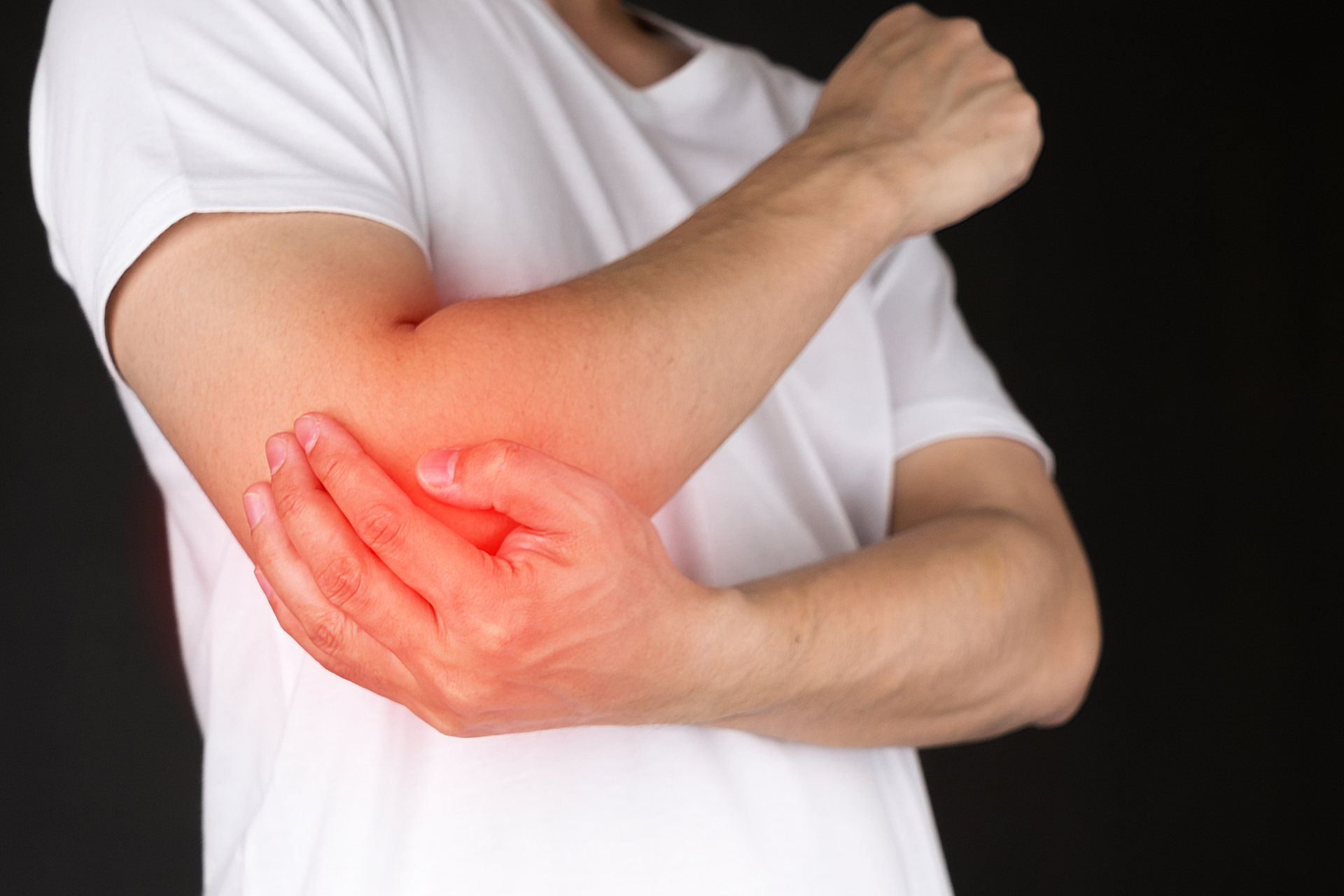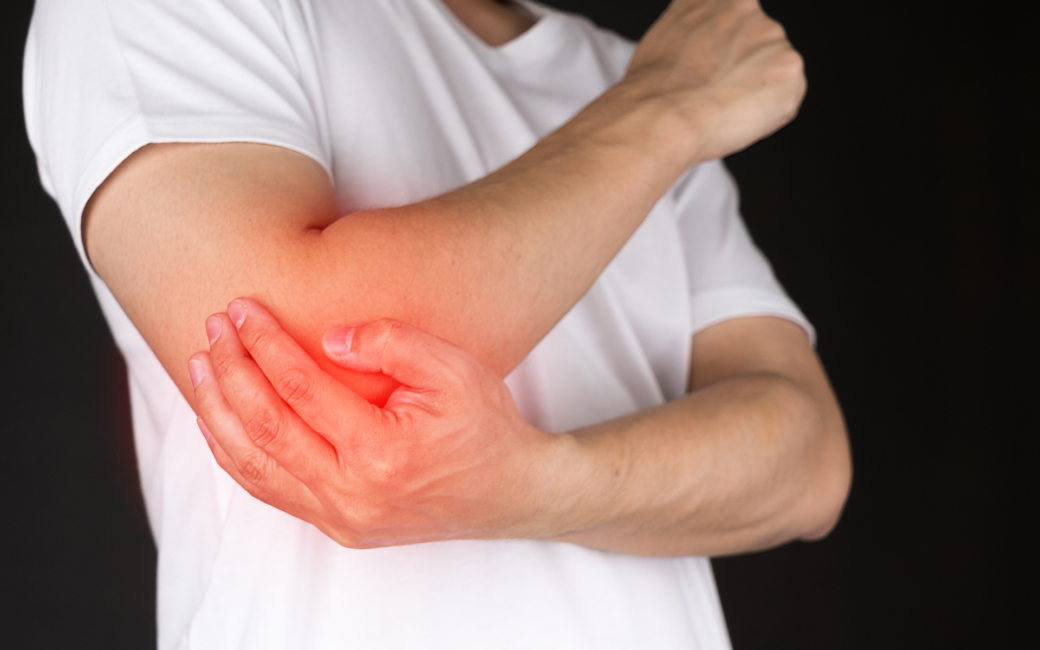Yes, you can treat tennis elbow without surgery
Surgery is not always the first solution to treating tennis elbow. There are numerous established treatments you can try instead, including physical therapy, dry needling and local cryotherapy.
Aug 1, 2021 | Ken Rubin, DPT

"Tennis elbow,” or lateral epicondylitis, is a common condition that presents with pain and tenderness around the lateral elbow at the site of the common wrist extensor tendon. This condition is frequently associated with a backhand motion in tennis and forced wrist extension, hence its name. It is also common in people who perform repetitive gripping activities, such as manual laborers. In the first three months of symptom onset, the condition is associated with an acute inflammatory process taking place at the insertion of the common wrist extensor tendon as it attaches to the humerus. The extensor carpi radialis brevis is the most commonly implicated muscle. The pathology appears to be consistent with degeneration of the long extensor tendons near the insertion to the humerus when symptoms last greater than three months. Up to 20% of cases persist after one year.
Tennis elbow affects between 1-3% of the general population, 7.4% of industrial workers, and 40-50% of tennis players. People between ages 35-50 years old are at highest risk.
However, it is important to speak with your physical therapist or physician to rule out other possible causes of lateral elbow pain. One common differential diagnosis is radial tunnel syndrome. This is a condition where the posterior interosseous nerve is being compressed as it travels under the supinator muscle which will also present with lateral elbow pain.
The good news is that there are numerous established treatments for tennis elbow. Symptoms can often be managed conservatively with physical therapy, but in some cases medical intervention is indicated. These interventions include, but are not limited to, the use of non-steroidal anti-inflammatory drugs, corticosteroid injections, protein-rich plasma injections, or in rare cases, surgery. This article will focus on physical therapy interventions. Your therapist will be able to refer you to another medical provider if you are not appropriate for therapy.
There is strong evidence for the use of strengthening exercises in the treatment of tennis elbow. Specifically, eccentric strengthening of the wrist extensor tendons. Eccentric strengthening refers to loading a muscle with resistance while it is lengthening. Conversely, concentric strengthening refers to loading a muscle while it is shortening. In a study where subjects had symptoms for greater than three months, the group that was prescribed eccentric strengthening demonstrated a faster regression of pain and a greater increase in muscle strength when compared to a group that was prescribed concentric strengthening. These results were persistent through the 12-month follow up period. Your physical therapist can help guide you in how to correctly perform these exercises, how much volume to complete and the appropriate resistance to use.
Exercises prescribed by your therapist will not be limited to your elbow. Research supports the use of scapular and rotator cuff strengthening in the treatment of tennis elbow. Training the lower and middle trapezius muscles can assist with scapular stabilization that will reduce stress on the elbow when participating in gripping activities and racquet sports.
Various manual therapy techniques are supported in the literature as part of a comprehensive treatment for Tennis Elbow. These include deep friction massage (DFM) and dry needling (DN). DFM is a technique intended to increase blood flow to a tendon in order to facilitate healing by increasing the supply of oxygen transported to the tissue. The goal of DFM is to prevent abnormal fibrous adhesions and abnormal scarring. This has been shown to decrease pain and improve grip strength in patients with tennis elbow.
Dry needling is a procedure in which a physical therapist penetrates the skin with a thin monofilament needle to treat underlying myofascial trigger points to manage neuromusculoskeletal pain and movement impairments. Trigger points refer to tight bands of muscle that disrupt function, restrict range of motion, cause local tenderness or refer pain. When comparing patients who received dry needling in addition to standard physical therapy in the treatment of tennis elbow to patients without DN, the DN group demonstrates an increased rate of pain reduction. DN has also been shown to be comparable to corticosteroid injections for patients with tennis elbow and actually may be superior in terms of perceived benefit from the patient. Both treatments were shown to be effective; however, there was a significantly higher rate of adverse reactions to those treated with corticosteroid injections compared to DN.
Various modalities may be beneficial in treating tennis elbow in addition to exercise and manual therapies. Local cryotherapy has been demonstrated to reduce the intake of analgesics and improve physical activity levels on those being treated for tennis elbow. This is due to reduction in inflammation in the target tissue, amongst other physiologic effects.
In conclusion, tennis elbow is a common condition trademarked by lateral elbow pain that is oftentimes associated with repetitive gripping activities and racquet sports. It is important to see a physical therapist once symptoms present to prevent tendon degeneration, development of chronic symptoms and to establish a comprehensive program to address the underlying impairments. Your physical therapist will establish a patient-centered treatment plan consisting of progressive exercise, manual therapies and modalities to reduce pain and restore full function.
